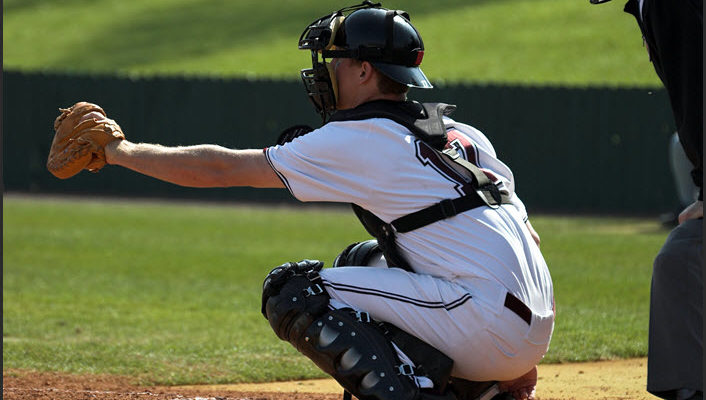PILLARS of a SUCCESSFUL CATCHER
with Nick McCoy (current catcher in the New York Yankees organization)
It is the aim of this article to give you and your players a simple visual aid to what REALLY matters in catching, no matter the level.
I didn’t come up with these “pillars”. No. All I did was put them in a digestible, visual format in order of importance from left to right. These pillars are not all inclusive because they ignore run-downs, backing up bases and many subtleties and nuances of the position that make good catchers great and the position more challenging than any other. However these pillars do two things very well for amateurs, collegians and professionals alike:
A.) They cover the NUTS and BOLTS of the job requirements of every catcher
B.) They provide a ROAD MAP for every coach and player. (Don’t know which direction to go with your individual defense work? Great. Go to the pillars!)
* It is also worth noting that each of these pillars could and probably should have its own article.
HERE THEY ARE:
1. Receiving- the most crucial component to any catcher, at any levels success, is his ability to catch the ball well. As such, make receiving, starting with a quality target, a priority during drill work, bullpen sessions and games.
2. Blocking- Keeping runners from advancing or allowing them to advance because we can’t keep the ball close, will win or lose your club games. Some coaching catch phrases: “lead with the glove the body will follow”, “take your chin to your chest”, “exhale on impact”, “think of your body as a ‘wet dishrag’” deadening the ball.
3. Throwing- we must be able to throw to each of the bases from the crouch and from an athletic position i.e. bunt plays & run-downs. We must first be accurate, then quick, then strong. Re-enforce the level of importance in each by putting a premium on quality, accurate catch-play, long toss and drill work. Remember: a time of 1.84 seconds does our club no good if the ball is laying in center field.
4. Game-Calling- even if you are calling the game as a coach, the way your catcher relays the signals (i.e. tempo, confidence and the ability to conceal the signals from the other team) is HUGE. “Putting down the right fingers” is a big part of the job.
5. Leadership & Communication- All eight guys on defense are facing the catcher. Thus, his body language, tempo in getting the ball back to the pitcher, reminding of outs, directing traffic on bunt-play are all VITAL to the look and feel of the whole defense. Additionally, taking well-timed mound visits to become an extension of the coaching staff. In the words of Pete Rose, “There’s only three ways you can treat a person: 1) you can kick em in the butt 2) you can pat em on the butt 3) you leave em alone. How else can you treat a person? You have to know who needs patted, who needs kicked and who needs left alone…some guys can’t stand the heat so keep em outta the kitchen.”
6. Pop-Ups- get up and turn around quickly with your back to the infield (the ball always comes back toward the infield), take off your mask for better vision and find the ball. Slow, steady steps with bent knees keeps our vision still. Keep your glove up to block the sun or lights and use it as a reference tool to keep the ball between your eyes and the glove. Once the ball is at its peak, ditch the mask (not before, not after.) Catch it! (NOTE: your catchers should be aware of field conditions, wind, amount of foul territory and proximity of dugouts and other railings…see Paul Lo Duca sliding catch into the dugout at Dodger stadium, you think he knew the field? ** being aware of conditions is especially on the road. We don’t want to be surprised.)
7. Bunt-Plays- Our guys behind the plate have to know where the ball is going and where the defense is going so they can make a quick, loud and definitive call or field and throw themselves. Again, letting runners advance and/or not taking care of the baseball in these situations will win or lose your club games.
8. Tag-Plays- The catcher is literally the last line of defense. We mess up the tag play, that’s a run. Period. One run is often the difference in the game. Proper emphasis and drill work should be allocated toward tag plays. Hit your catchers fungos in full gear.
It is my hope that this article gives you and your players a simple visual aid to what REALLY matters in catching, no matter the level.
Until next time.
Nick McCoy
NY Yankees Catcher (Minor League)

